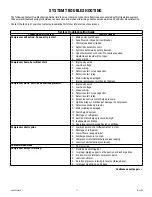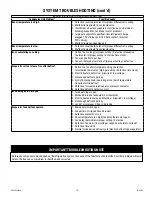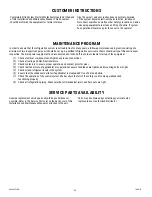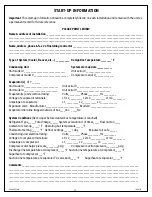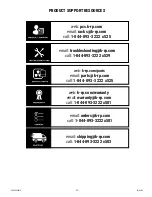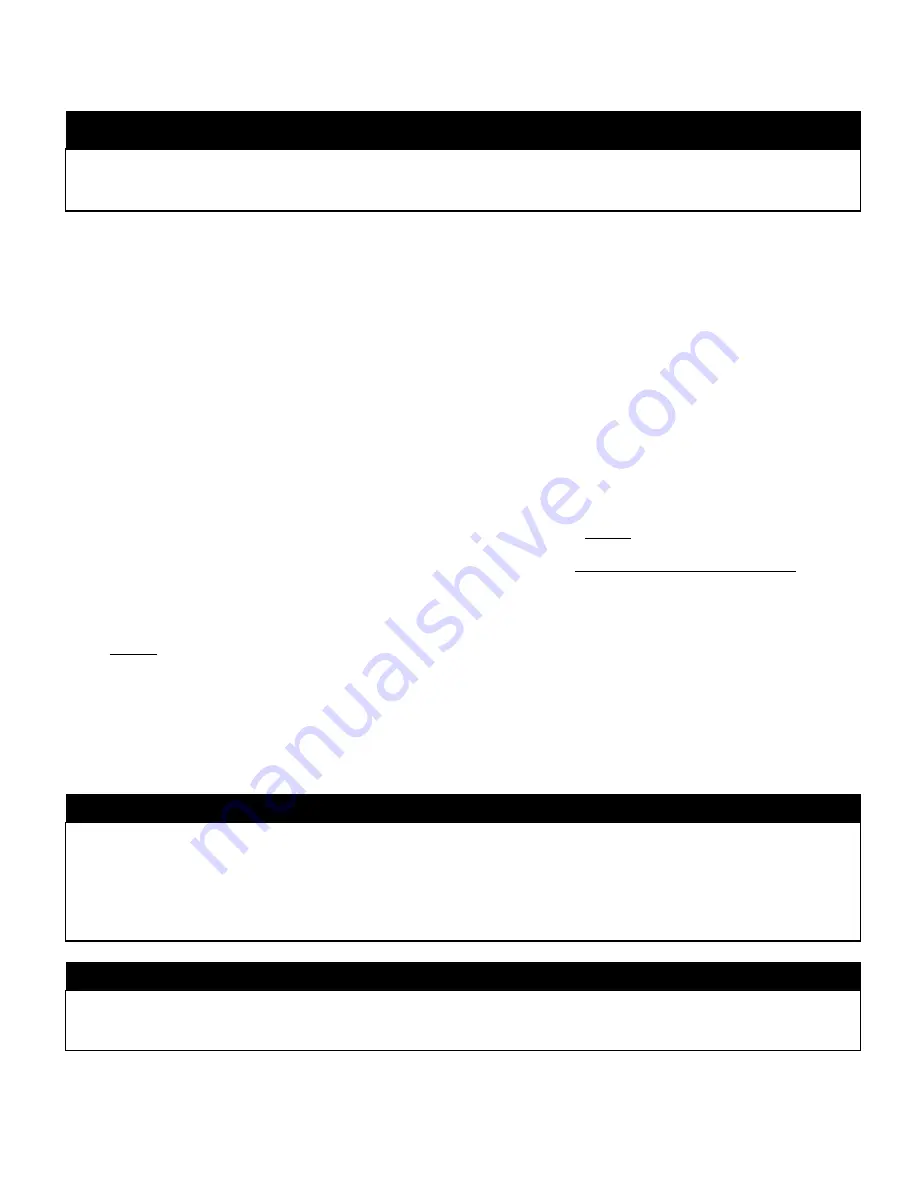
K90-KPCS-IM-2
18/04/22
- 13 -
SYSTEM START-UP CHECK LIST
Only a qualified refrigeration mechanic who is familiar with compressor performance and the function and adjustment of all controls
and components should start up the compressor. Finishing up work on the installations should be planned so that a qualified mechanic
IMPORTANT START-UP NOTE
Before any refrigeration system is started, the following items should be checked:
Before any refrigeration system is started, the following items should be checked:
(1) Check that the wiring diagrams, instructions, bulletins etc. are read and attached to the unit for future reference.
(2) Check that all electrical and refrigeration connections are tight.
(3) Check compressor crankcase oil level (if equipped with sight glass). It should be from 1/8 to 1/2 full in the sight glass.
(4) Ensure that compressor shipping spacers (spring mounted compressors) or hold down nut (solid mounted compressors are
properly in place.
(5) Check that the compressor discharge and suction shut-off valves are open.
(6) Ensure that the high and low pressure controls (see table below), pressure regulating valves, oil pressure safety controls and
any other safety controls are adjusted properly.
(7) Check all motors, fans and pump bearings in the condenser and evaporator. If they are the types that require oil or grease,
make sure that this is attended to in accordance with the tag, which will be attached. Fan blades and pumps should be checked
for correct rotation, tightness and alignment. Air should be drawn through the condenser (air cooled condensing unit models).
(8) Electric and hot gas evaporator fan motors should be temporarily wired for continuous operation until the room temperature
has stabilized.
(9) Observe the system pressures during the charging and initial operation process.
DO NOT
add oil while the system is low on
refrigerant charge unless the oil level is dangerously low.
(10) Continue to charge the system until it has enough charge for proper operation.
DO NOT OVERCHARGE THE SYSTEM.
Note that
bubbles in the sight glass may not necessarily mean a shortage of refrigerant. It could be caused by a restriction.
After the system is started, pay attention to the following:
(1)
DO NOT
leave the system unattended until the system has reached its normal operating condition and the oil charge has
properly adjusted itself to maintain the proper level in the sight glass.
(2) Compressor performance, and that of all of the moving components, should be watched carefully throughout the first operating
cycle and then checked periodically during the first day of operation.
Three phase scroll compressors must be checked for correct rotation. During the initial start up, observe the suction and discharge
gauges to ensure the suction pressure drops and the discharge pressure rises.
WARNING
Extreme care must be used when starting compressors for the first time after the system has been charged. During this time liquid
refrigerant may have migrated to the compressor crankcase, creating a condition that could cause the compressor damage due to
slugging. Energizing a crankcase heater (if so equipped) 24 hours prior to start-up is recommended. If the compressor is not equipped
with a crankcase heater, directing a 500 watt heat lamp or other safe heat source on the lower shell or crankcase of the compressor
for approximately thirty minutes is recommended unless machine room is at above 65°F for at least 24 hrs prior to startup.
CAUTION

















